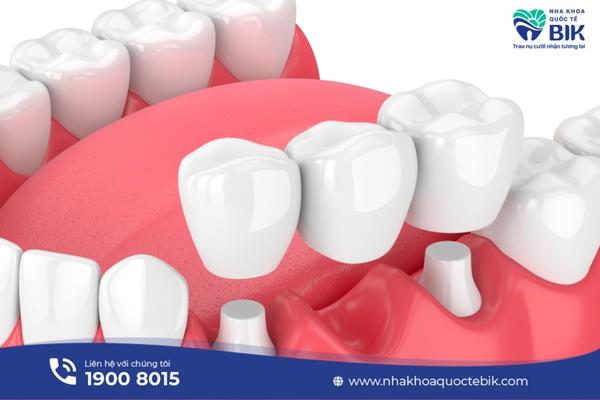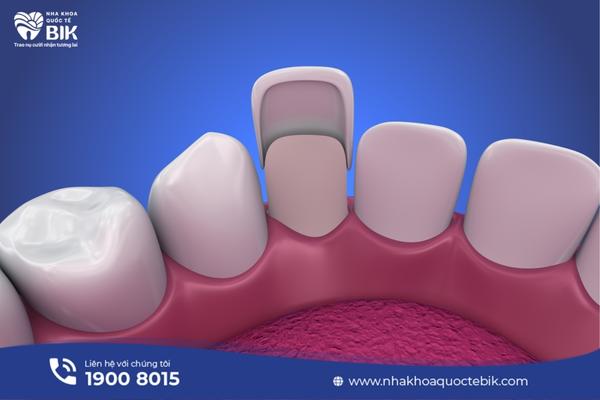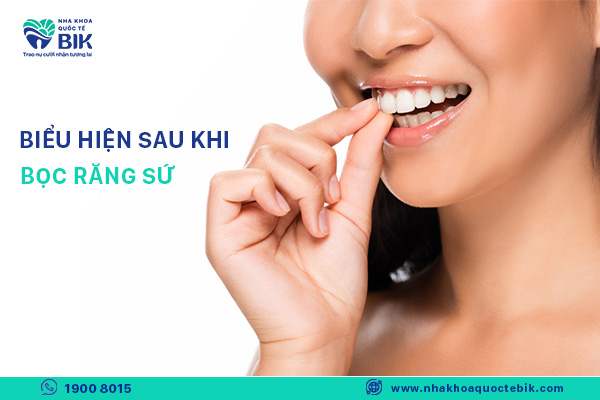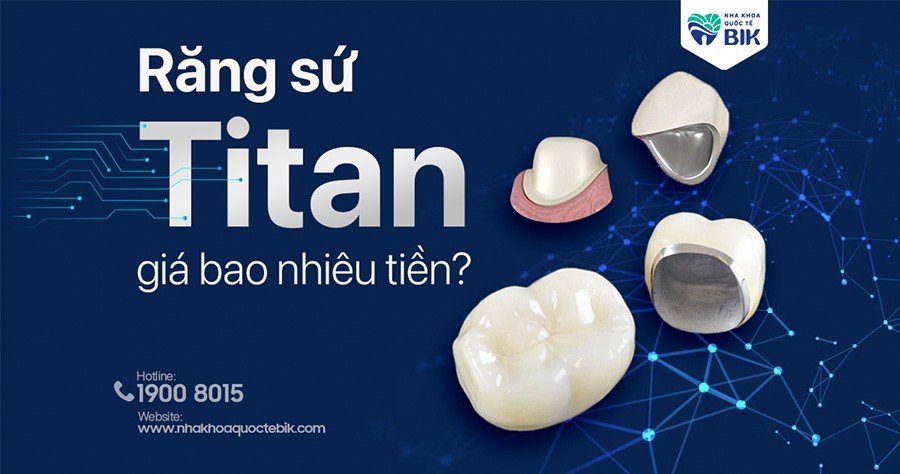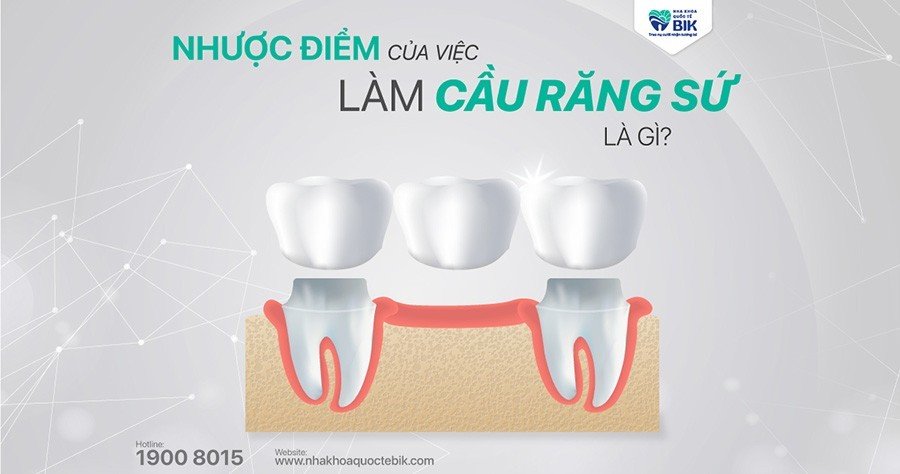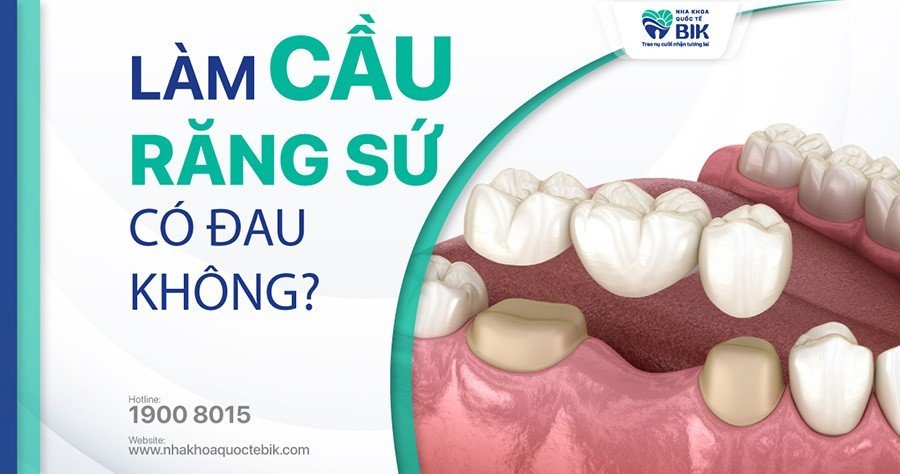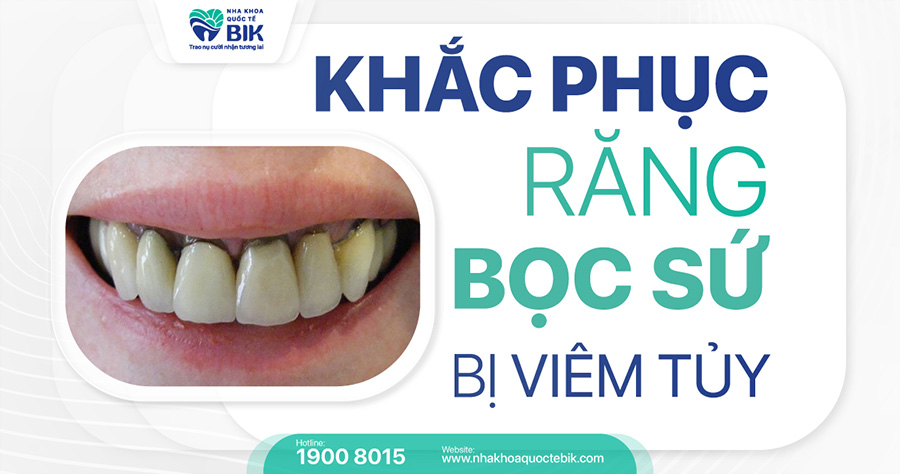
Porcelain crowns with pulpitis are a fairly common condition that causes a lot of trouble for customers. This problem can be treated with specialized measures at the dentist, completely ending the pain and discomfort caused by pulpitis. In addition, customers can also pay attention to their daily oral care regimen to prevent porcelain crowns from having pulpitis.
1. What causes pulpitis in porcelain crowns?
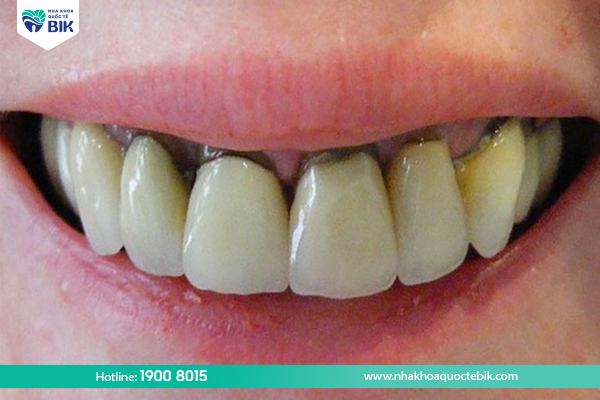
Porcelain crowns with pulpitis can be caused by one of the following reasons:
1.1. Using poor quality porcelain crowns
Currently, there are many types of fake, poor quality porcelain crowns widely used on the market. These types of teeth are often made from many impurities, easily causing irritation in the oral environment and causing inflammation of the pulp.
1.2. Not completely removing the pulp before applying porcelain crowns
In cases where the patient has had root canal treatment but the pulp has not been completely removed before applying porcelain crowns, the pulpitis will become more and more severe and difficult to treat.
1.3. Real teeth are ground in the wrong proportion
During the process of cosmetic porcelain crowns, the real tooth stump must be ground to make a support for the porcelain crown. The proportion of enamel that is ground will be carefully calculated in advance to ensure the safety of the customer. However, there are cases where the doctor grinds too much, affecting the tooth structure and causing damage to the pulp. This is also the cause of pulpitis in porcelain crowns.
1.4. Poor doctor’s skills
Grinding the tooth stump is a very important technique that determines the success of a cosmetic porcelain crown, so it must be performed by a good doctor with a lot of experience. In cases where the doctor is not skilled, performs incorrectly, the force is too strong, too light or shakes too much, all of which can affect the pulp.
1.5. Not making temporary teeth
Another reason why porcelain crowns get pulpitis may be because the dentist does not install temporary teeth or the temporary teeth are not made properly. In that case, the real tooth stump inside will be easily attacked by bacteria, causing pulpitis.
1.6. Using inappropriate dental glue
To firmly attach porcelain crowns to real teeth, the dentist will have to use specialized dental glue. However, some dental facilities still use glue that is not suitable for old materials or is of poor quality. These products often have a high pH and contain many chemicals, so they can easily cause problems for porcelain crowns and real teeth.
2. Effects of porcelain crowns with pulpitis
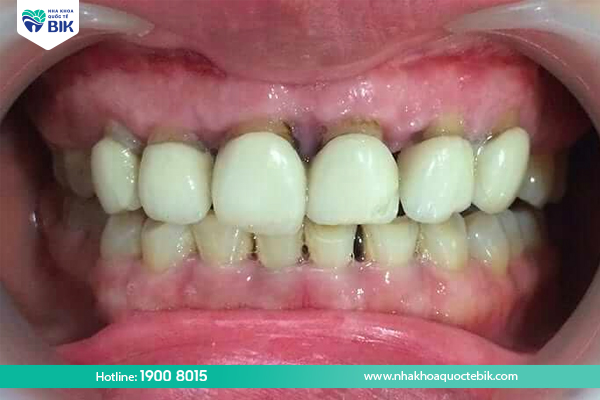
Porcelain crowns with pulpitis can cause the following effects:
2.1. Damage to the entire real tooth
The dental pulp is the most important part of the tooth, containing nerves and providing nutrients to help strengthen the tooth. Once the affected pulp is not treated for a long time, it can lead to pulp death, the tooth becomes loose and the doctor is forced to prescribe the extraction of the real tooth.
2.2. Risk of mass tooth loss
Bacteria from infected tooth roots will gradually attack and spread to adjacent teeth, penetrating the gum tissue and jawbone, causing tissue necrosis. At this point, the teeth begin to shift and crack, leading to mass tooth loss.
2.3. Time-consuming and costly
The cost for each porcelain crown is not cheap, so removing and reinstalling the porcelain crown takes a lot of time and money from the customer. In cases where the porcelain crown has pulpitis that is not detected in time, the treatment process will take much more time and effort.
3. How to fix pulpitis in porcelain crowns
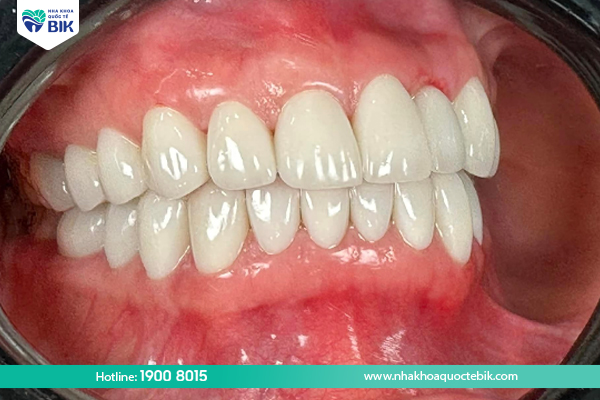
Image of a customer with porcelain crowns at BIK International Dental Clinic
When detecting pulpitis in porcelain crowns, the only solution is to go to the dentist for radical treatment. Normally, the pulpitis treatment process for porcelain crowns includes the following basic steps:
3.1. General examination
First, the doctor will remove the porcelain crown and conduct a general examination of the customer’s oral health. After that, the patient will be X-rayed so that the doctor can determine more clearly the condition of pulpitis before being able to give a specific treatment regimen.
3.2. Pulpitis treatment
The infected pulp will be completely removed to end the persistent pain and discomfort. The cavity of the pulp will be filled with a specialized material, safe and guaranteed not to cause irritation when present in the oral cavity.
3.3. Reattach the porcelain crown
If the old porcelain crown can still be used, the doctor will reattach it as before. In case the porcelain crown is cracked or chipped, the doctor will have the patient take a jaw impression to make a new porcelain crown. Depending on the severity of the disease, the treatment time can last about 1 – 3 days.
4. Preventing pulpitis after porcelain crowns
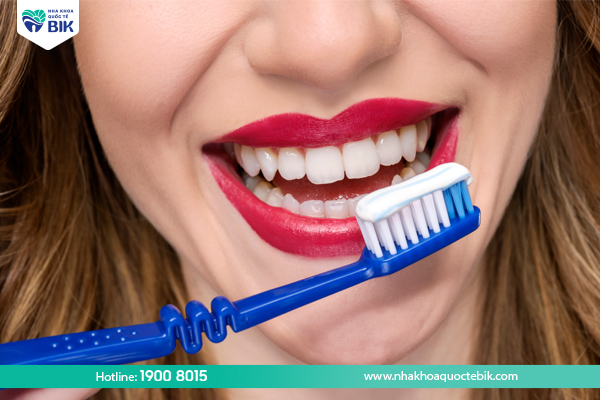
To prevent pulpitis after porcelain crowns, customers should note the following:
4.1. Proper oral hygiene
Brush your teeth at least twice a day with a soft-bristled toothbrush with moderate brushing force to avoid damaging the gum tissue.
Replace your toothbrush every 3-4 months to prevent bacteria from accumulating and causing inflammation.
Combine the use of dental floss, water flossers and mouthwash to completely remove bacteria as well as food debris in between teeth.
4.2. Reasonable diet
Regularly eat lots of green vegetables, fruits, or foods rich in calcium from meat, fish, shrimp, eggs, milk, etc. to help strengthen teeth.
Drink plenty of water to clean the mouth, limit plaque and kill bacteria that cause tooth decay.
Limit the use of foods containing a lot of sugar or highly acidic fruits, coffee, tea, etc. because they are agents that destroy tooth enamel.
4.3. Regular check-ups
Visit the dentist at least once every 6 months to be examined by a doctor and take timely treatment measures if you encounter any unusual problems.
5. Choosing a reputable dental clinic

Although root canal treatment is a fairly common solution, it also requires a high level of expertise from the doctor combined with the support of modern machinery to achieve the best results, while saving a lot of time for customers. Therefore, customers should consider choosing a number of dental clinics to treat porcelain crowns with pulpitis that can fully meet the following criteria:
5.1. Team of good doctors
Customers should choose a reputable dental address with a team of good doctors to be directly examined and treated by a team of highly skilled doctors with many years of experience in the field of dentistry. With meticulous and precise operations, doctors ensure that the feeling of pain and soreness caused by inflammation will end because the tooth pulp has been completely removed.
5.2. Equipped with modern technology
Dental facilities need to be invested in modern and advanced machinery and technology. This helps the diagnosis and treatment process become more accurate and easier. Thereby helping to save maximum time for customers when coming to the dentist but still get the best treatment results.
5.3. International standard pulpitis treatment process
The pulpitis treatment process at the dental clinic must be performed in accordance with international standards to ensure customer safety. In addition, the dental clinic must also fully meet the standards of the Ministry of Health on disinfection and sterilization, avoiding cross-infection between patients.
Porcelain crowns with pulpitis can be caused by many different reasons. When this condition is detected, customers should go to a reputable dental clinic for timely examination and treatment. If pulpitis is not prevented in time, it can lead to more serious consequences and be more difficult to overcome.

